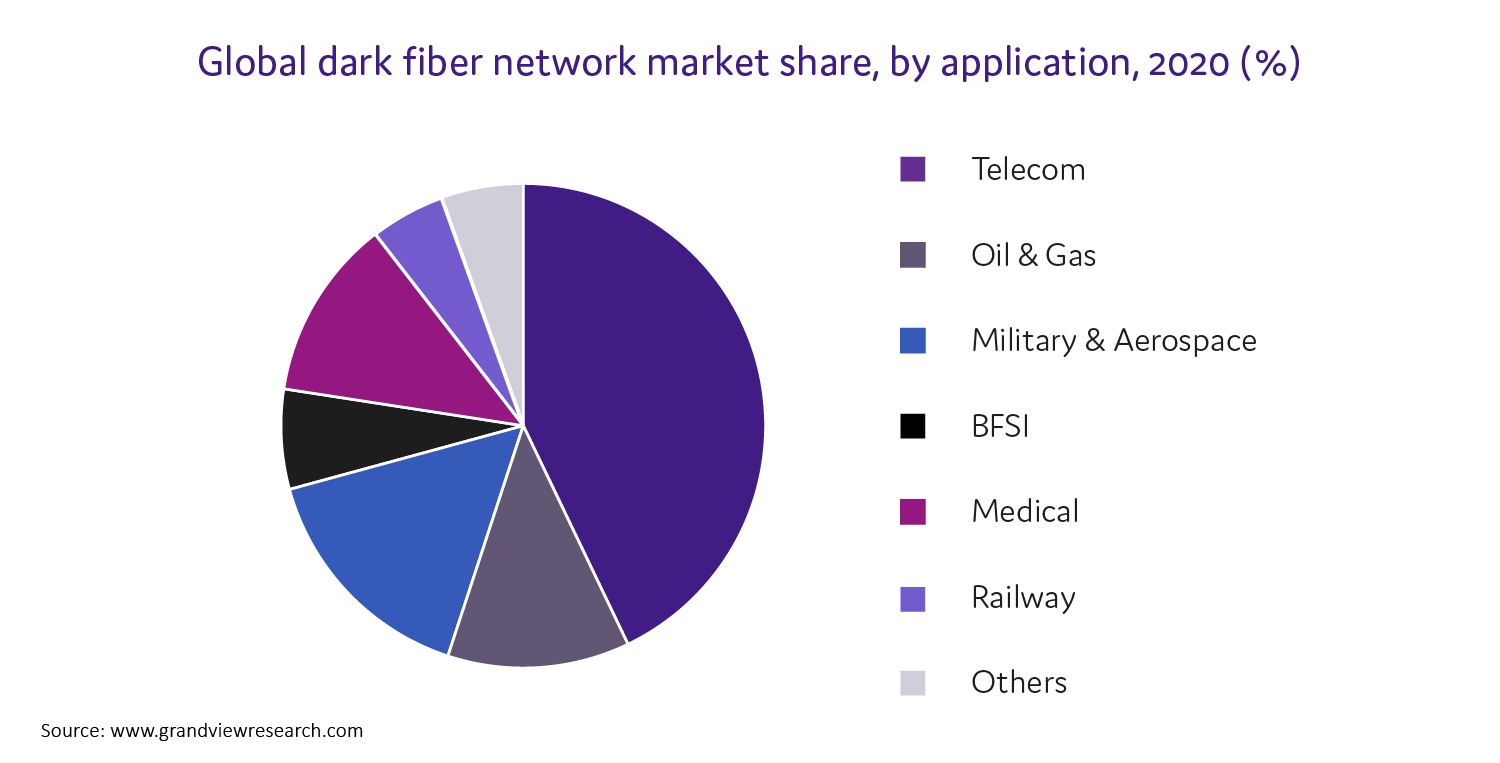With 11% CAGR between 2021 and 2026, annual spending on dark fiber will reach $8.7 billion annually by 2026 according to an April 2021 report by Market and Markets. In Europe some of the leading dark fiber providers are: euNetworks, GasLINE, Lyntia and Eurofiber. In the US top names include: Zayo, Lumen, and Crown Castle. These are in addition to fiber investments by more traditional telecom companies like AT&T, NTT and Colt. What trends are driving this massive fiber investment? The short answer is the need for more bandwidth, faster data rates and longer distance links. Fiber is the ideal media because it has nearly unlimited ability to enable all three.

However, bandwidth, speed and distance do not tell the whole story. End users, corporations, governments and increasingly other connected devices are using fiber to reach data centers for valuable new applications. Here are some ways fiber enables these applications:
1) Lower latency
Latency is the time it takes for a packet to travel from point A to point Z. Fiber offers the fastest transmission and hence the lowest latency. 5G cellular service would be impossible without low latency in the Radio Access Network. Likewise, autonomously driven vehicles also require extremely low latency to enable rapid reaction time between the vehicle and the data processing points.
2) Larger files
The need to transmit larger files is a given for many contemporary applications. Radiology is an example. Radiology files are massive; the machines that create them relatively scarce and the experts that read them are distributed geographically. Huge patient files are often captured in one local and sent to experts for diagnosis in another location. Fiber enables these large file transfers.
3) Higher data volumes
Researchers investigating physics, genetic simulations, commercial mineral geology, aerospace engineering, and many other disciplines must often analyze massive data sets in near-real time. Fiber provides the bandwidth and speed that supercomputers working in parallel require to process these massive data sets.
4) Faster data communication rates
Streaming movies, interactive gaming, real-time retail inventory control, and other streaming services require faster communication speeds. Only fiber will support the data rates needed for these services over the distances involved.
5) Increased security
Fiber is difficult to tap compared to other media. In addition, encryption and other advanced security techniques are enabled with the higher data rates and faster response times enabled by fiber networks.
Transceivers drive these new applications and unlock the potential fiber offers. The vast majority of transceivers used on these new fiber networks are SFP+, SFP28, QSFP-56 and QSFP-DD. There are hundreds of options within these 4 categories of SFPs. ProLabs has one of the largest SFP transceiver inventories and industry experts focused on selecting the optimal solution for your network. In addition, ProLabs is distinguished by the rigorous testing and validation we do in house to ensure interoperability of transceivers with network equipment. Transceivers, DACs and AOCs, offered by ProLabs support WDM and gray wavelengths at data rates from 1G to 400G for all the major protocols and vendors such as CISCO, Extreme, HPE, Juniper and Palo Alto to name just a few.
Contact us today to improve and future-proof your data center performance.


